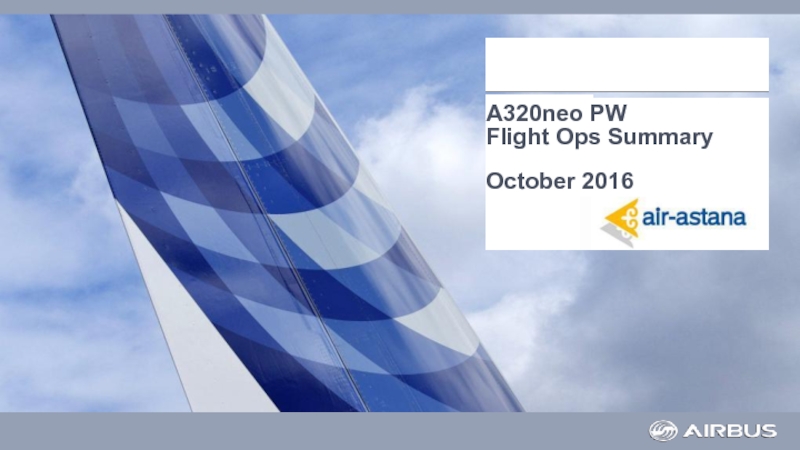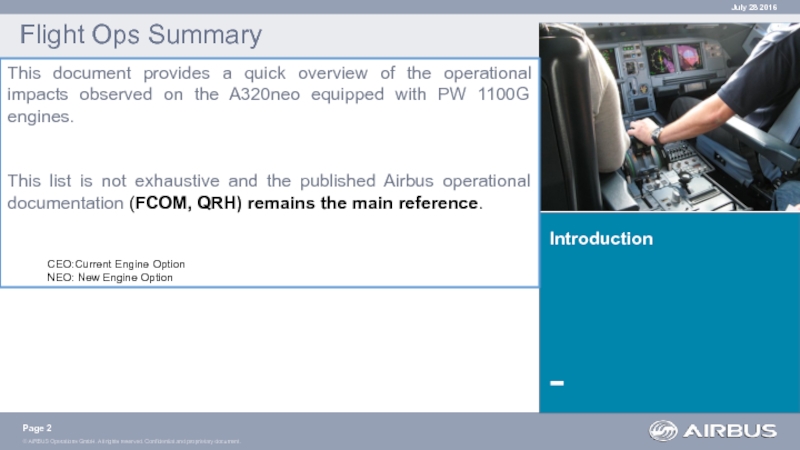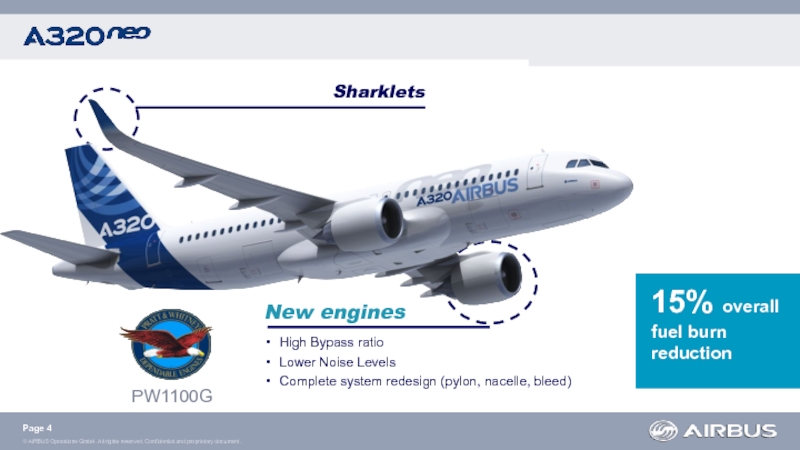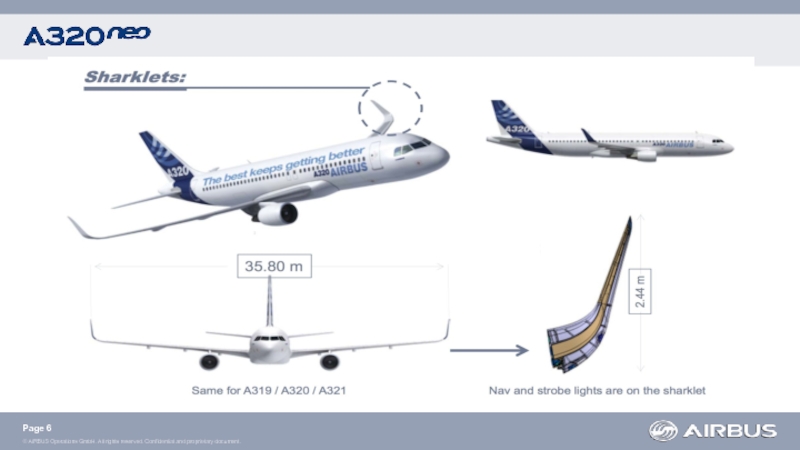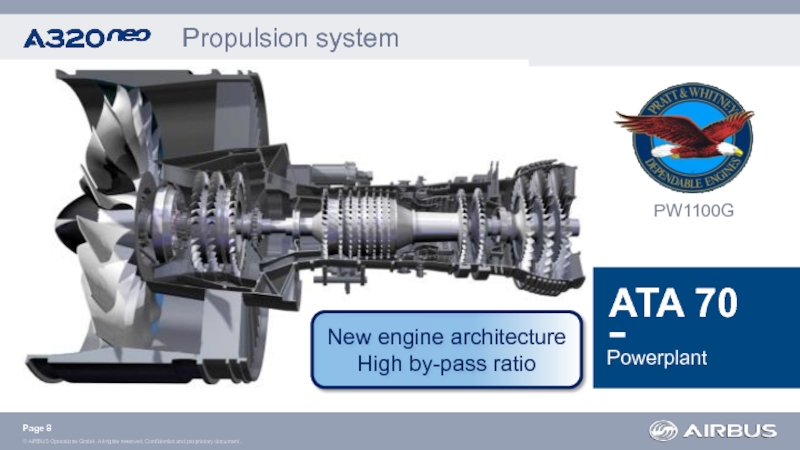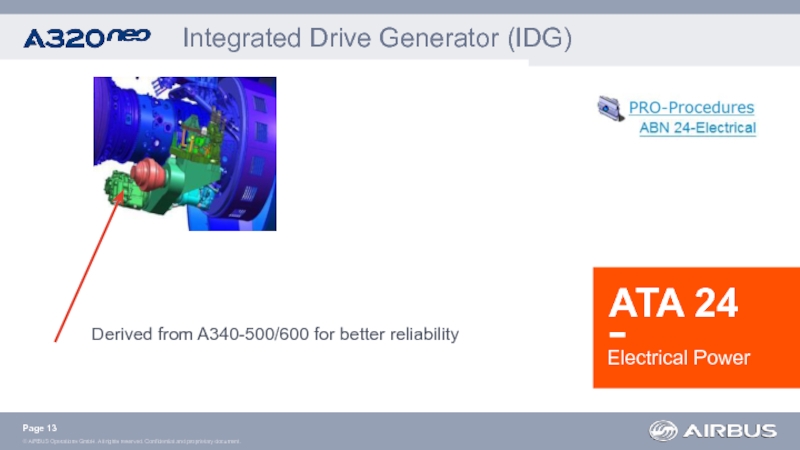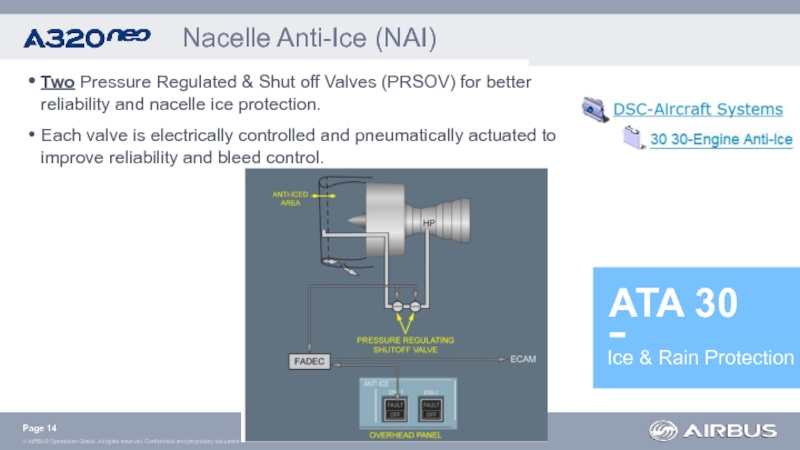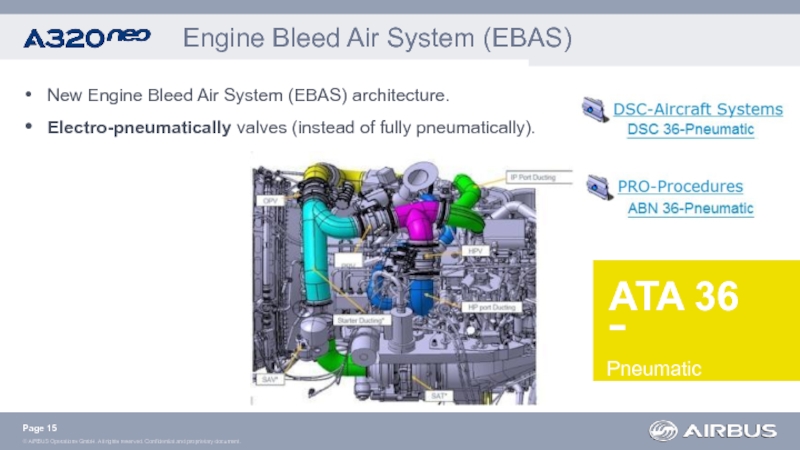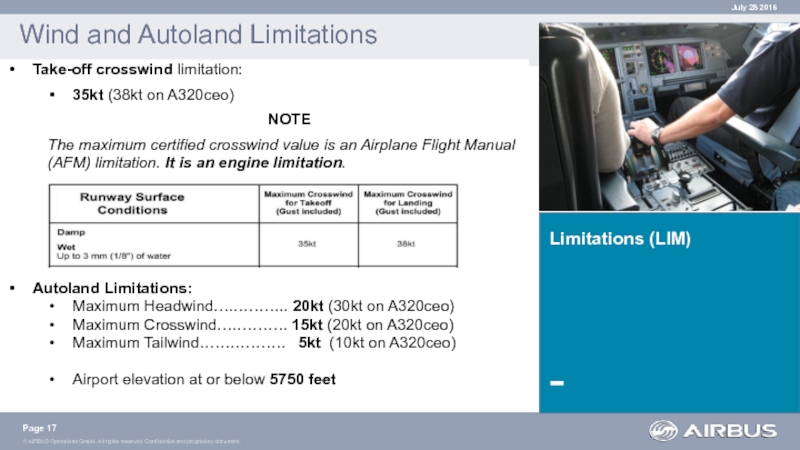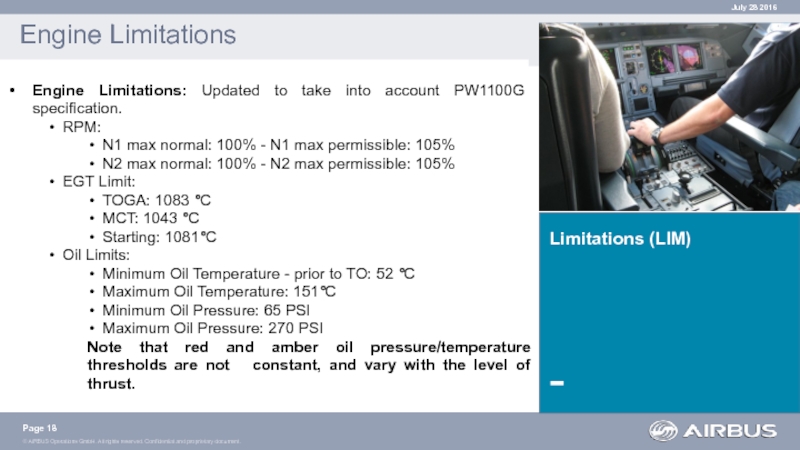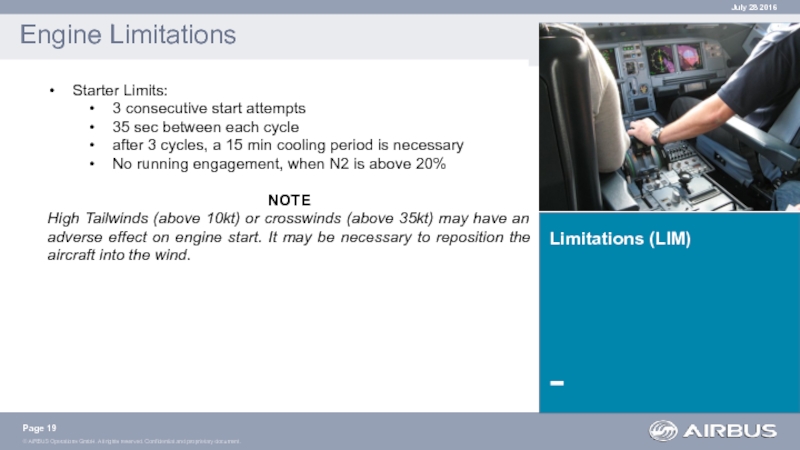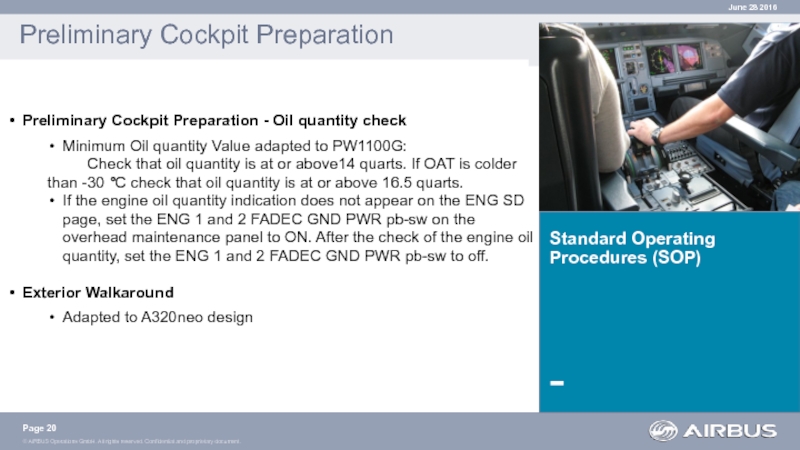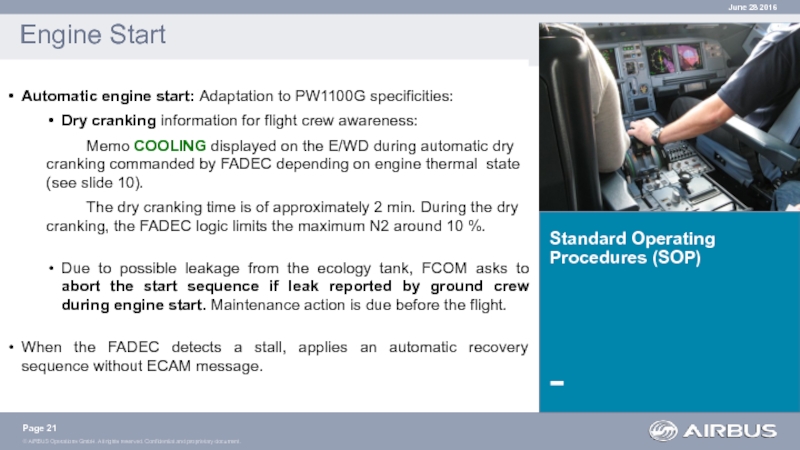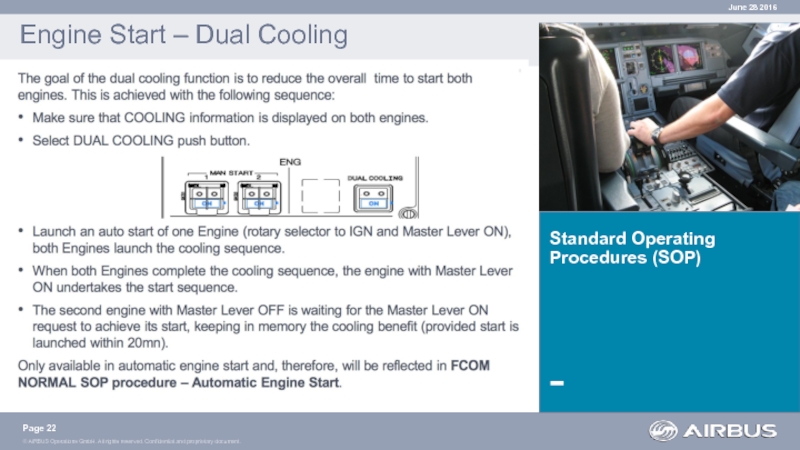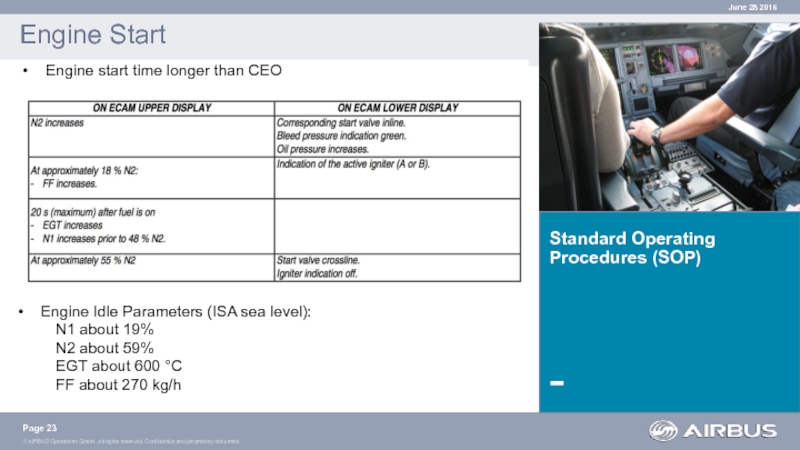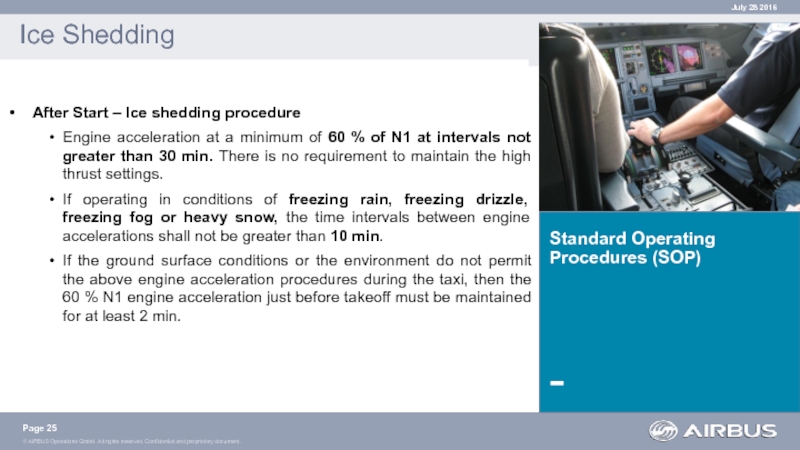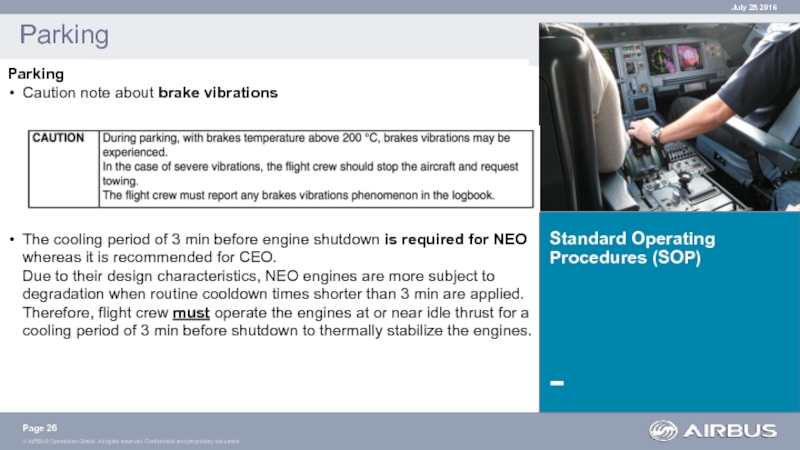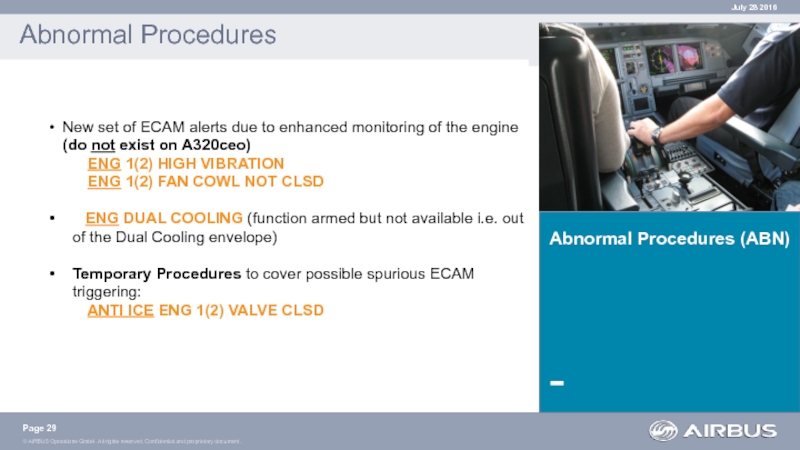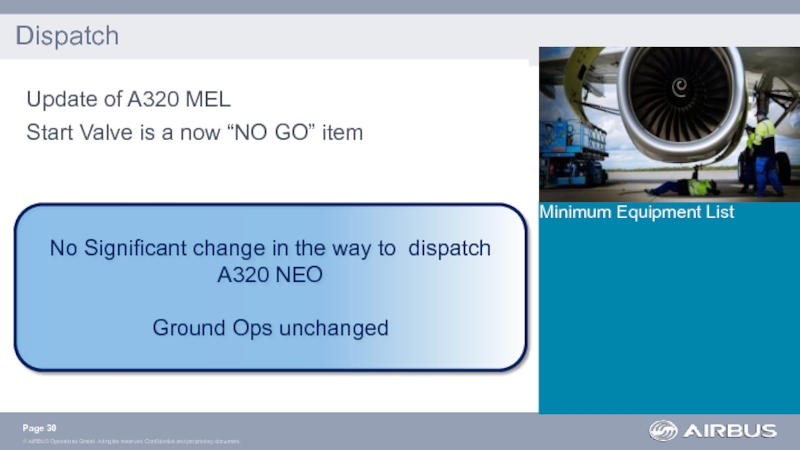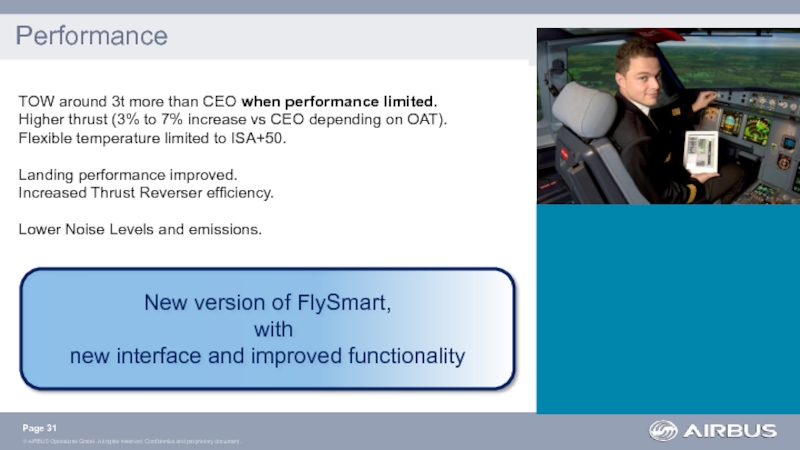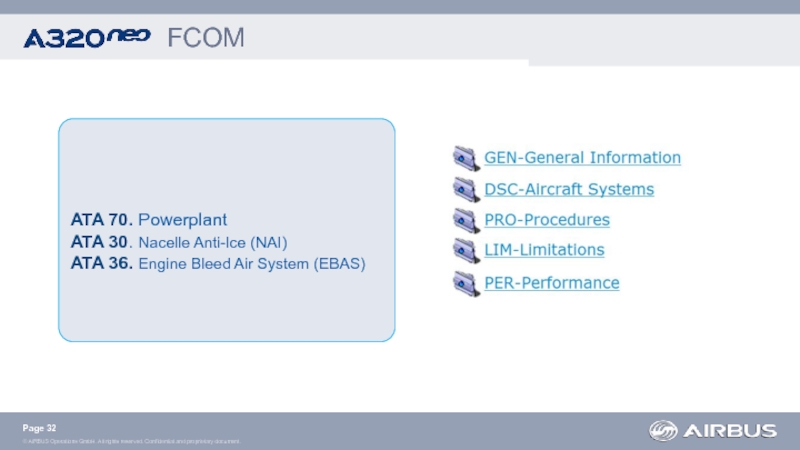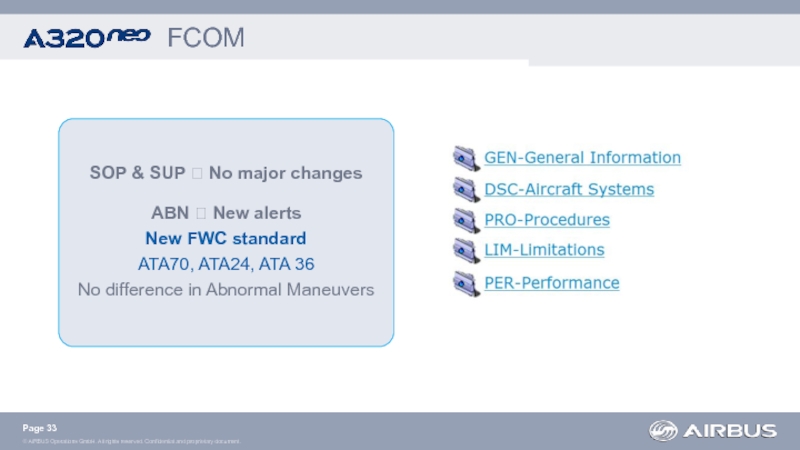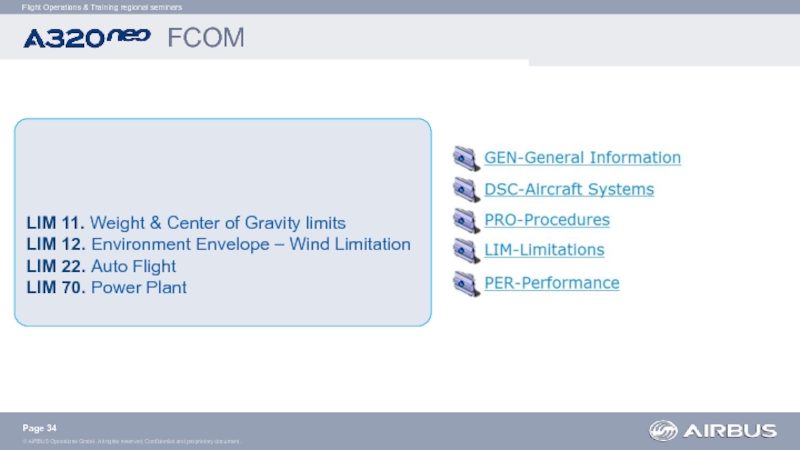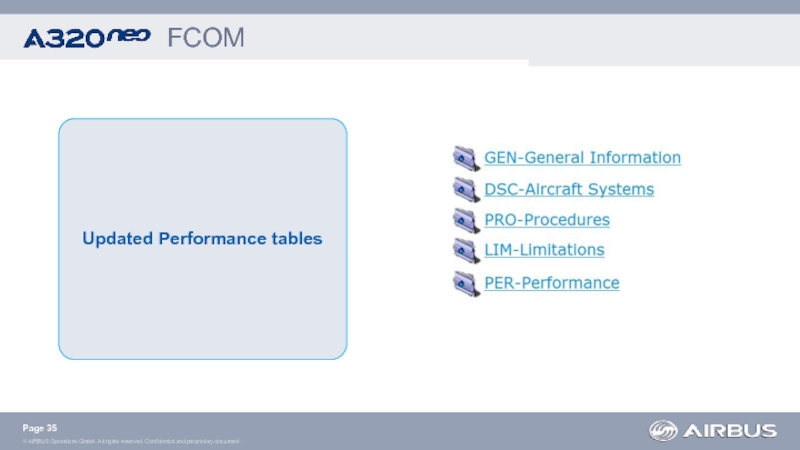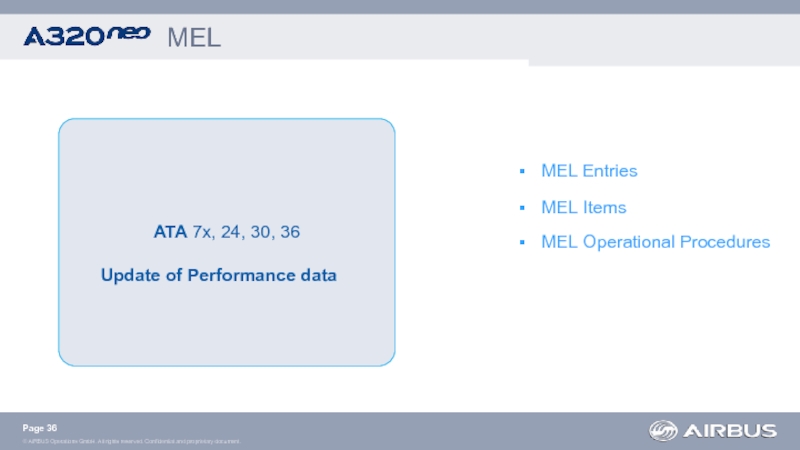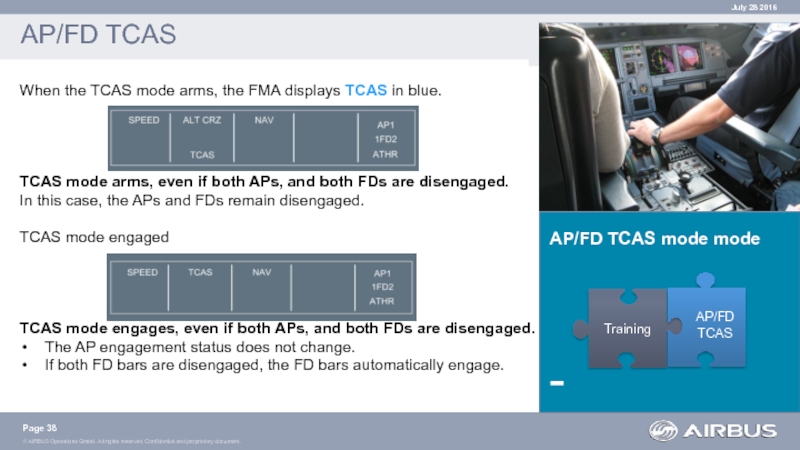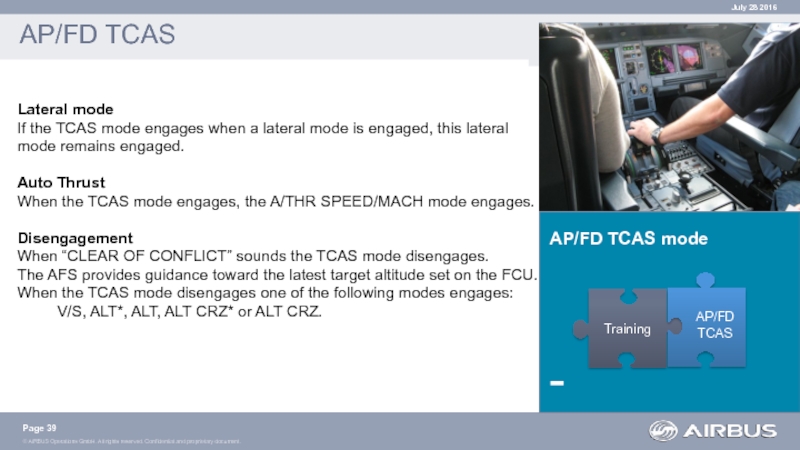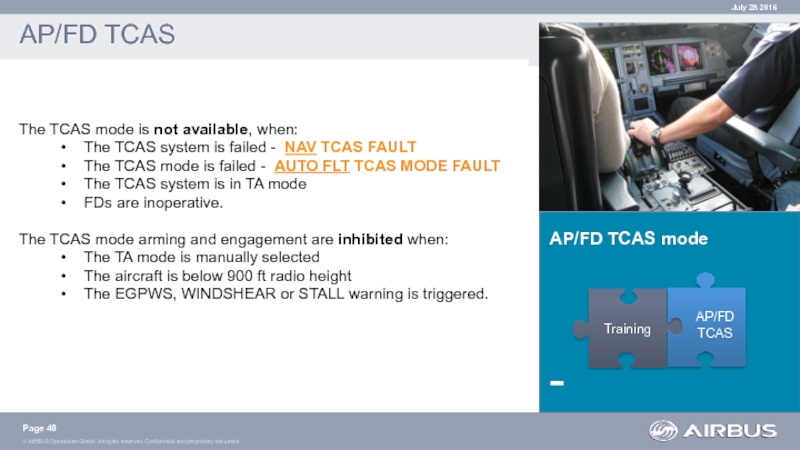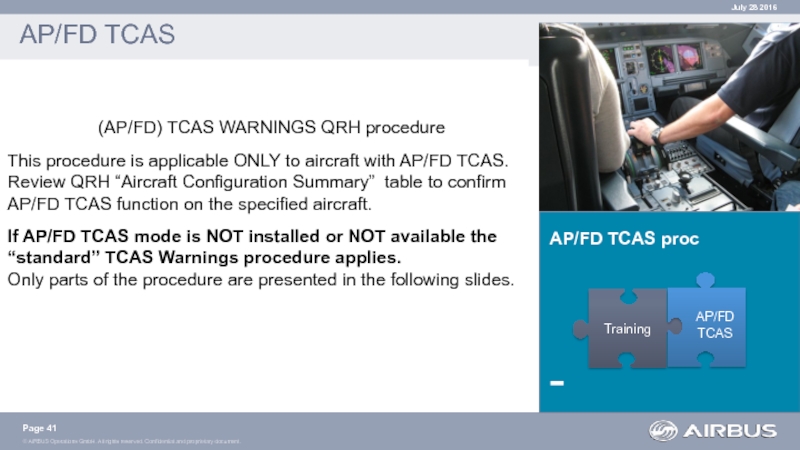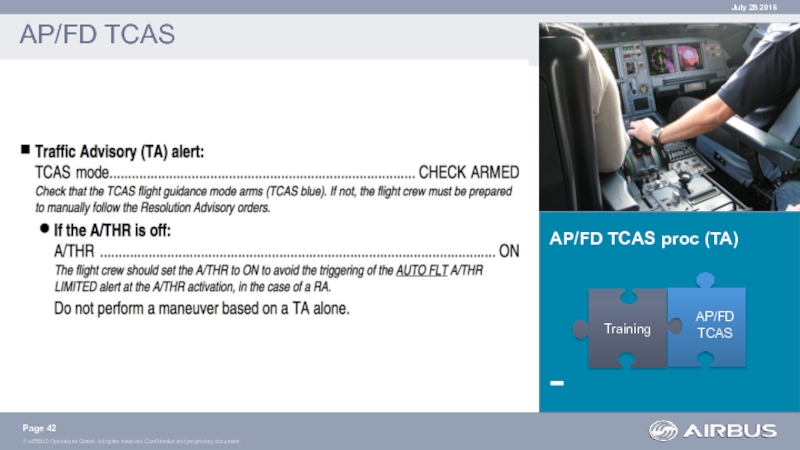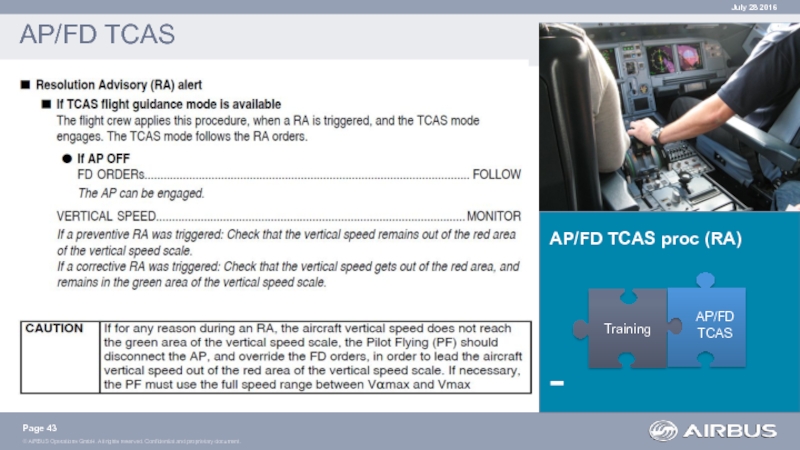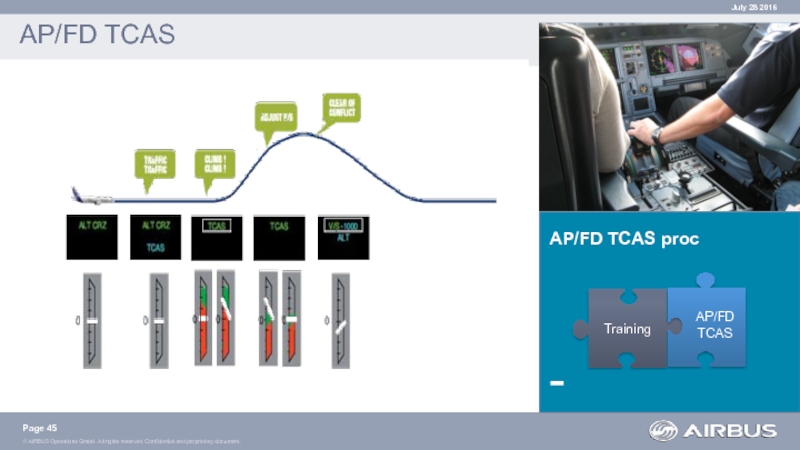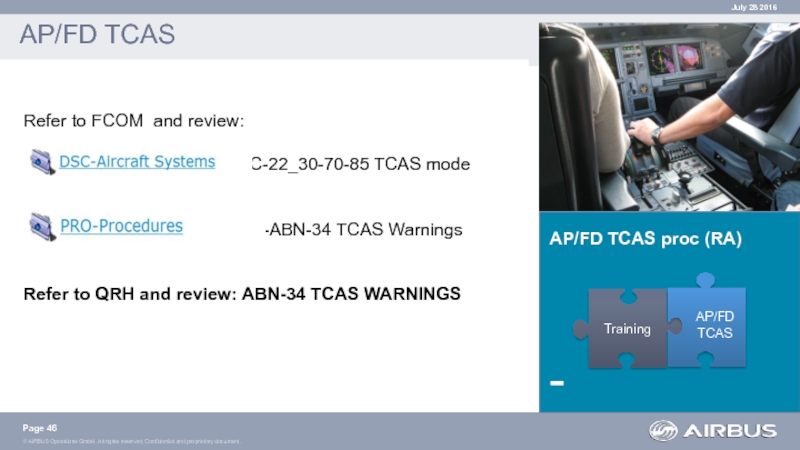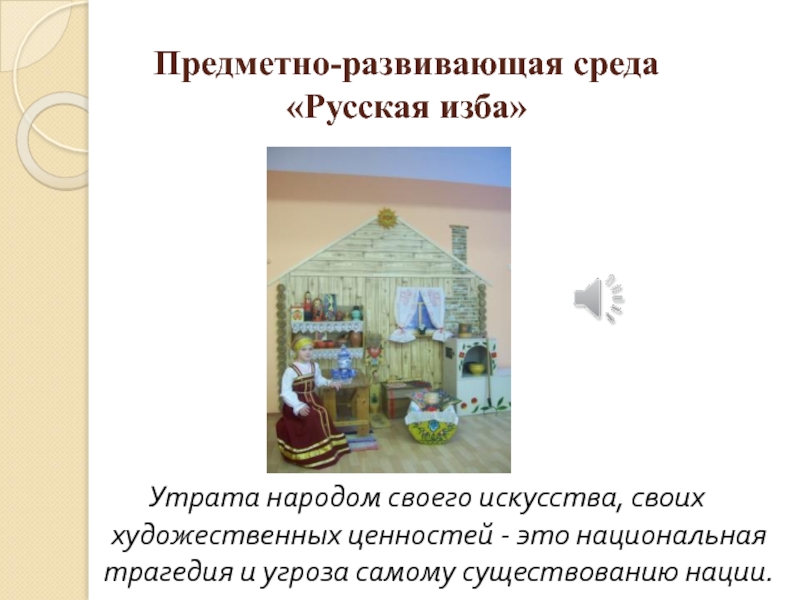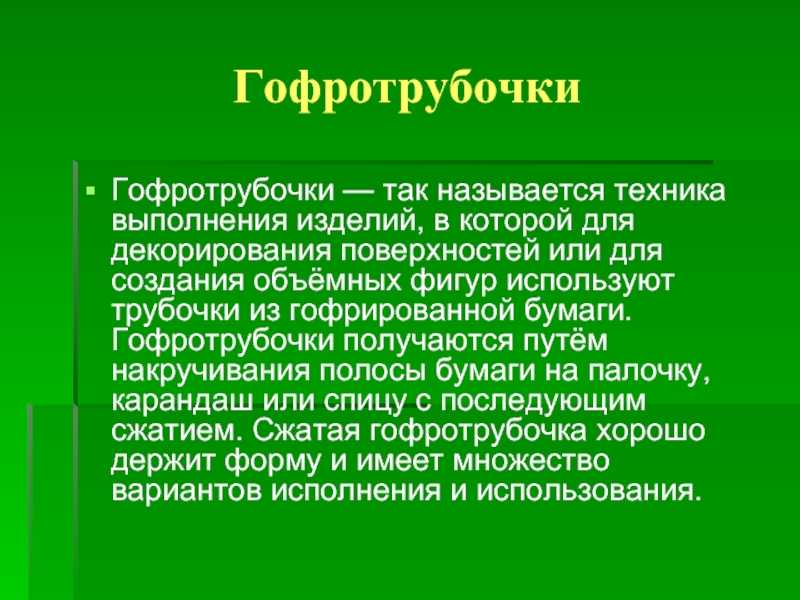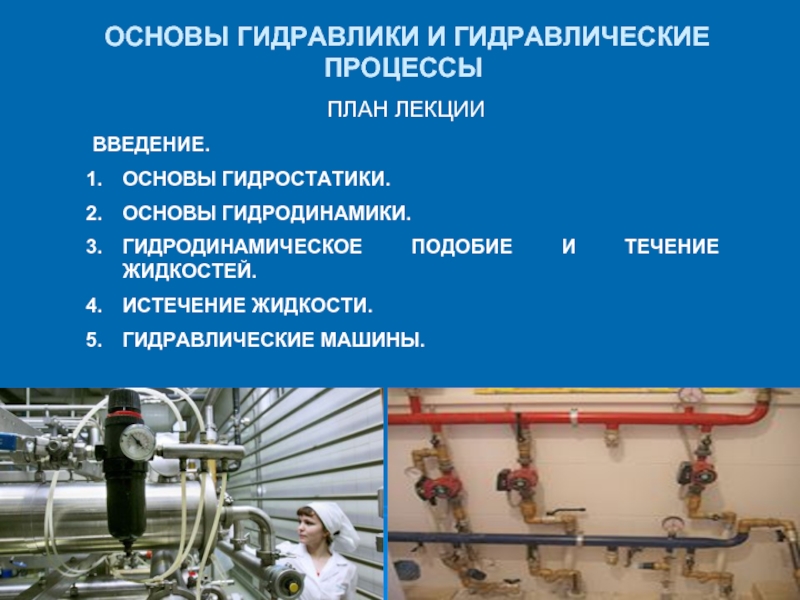- Главная
- Разное
- Дизайн
- Бизнес и предпринимательство
- Аналитика
- Образование
- Развлечения
- Красота и здоровье
- Финансы
- Государство
- Путешествия
- Спорт
- Недвижимость
- Армия
- Графика
- Культурология
- Еда и кулинария
- Лингвистика
- Английский язык
- Астрономия
- Алгебра
- Биология
- География
- Детские презентации
- Информатика
- История
- Литература
- Маркетинг
- Математика
- Медицина
- Менеджмент
- Музыка
- МХК
- Немецкий язык
- ОБЖ
- Обществознание
- Окружающий мир
- Педагогика
- Русский язык
- Технология
- Физика
- Философия
- Химия
- Шаблоны, картинки для презентаций
- Экология
- Экономика
- Юриспруденция
CEO:Current Engine Option. NEO: New Engine Option презентация
Содержание
- 1. CEO:Current Engine Option. NEO: New Engine Option
- 2. Introduction Flight Ops Summary
- 3. = Pilot qualified on A320 CEO
- 4. Sharklets New engines High
- 5. Adapted systems ATA22: Autoflight
- 6. Page
- 7. Hardware modifications Software modifications Page
- 13. Electrical Power
- 14. Ice & Rain Protection
- 15. New Engine Bleed Air System (EBAS) architecture.
- 16. Standard Operating Procedures (SOP)
- 17. Limitations (LIM) Wind and Autoland
- 18. Limitations (LIM) Engine Limitations
- 19. Limitations (LIM) Engine Limitations
- 20. Standard Operating Procedures (SOP) Preliminary
- 21. Standard Operating Procedures (SOP) Engine
- 22. Standard Operating Procedures (SOP) Engine
- 23. Standard Operating Procedures (SOP) Engine
- 24. Standard Operating Procedures (SOP) After Start Page June 28 2016
- 25. Standard Operating Procedures (SOP) Ice
- 26. Standard Operating Procedures (SOP) Parking
- 27. Supplementary Procedures SUP-70 Power
- 28. Supplementary Procedures SUP-93 Green Operating
- 29. Abnormal Procedures (ABN) Abnormal
- 30. Minimum Equipment List Dispatch
- 31. Performance
- 32. ATA 70. Powerplant ATA 30. Nacelle
- 33. SOP & SUP ? No major
- 34. LIM 11. Weight
- 35. Updated Performance tables FCOM Page
- 36. MEL ATA 7x, 24, 30, 36
- 37. AP/FD TCAS mode AP/FD TCAS
- 38. AP/FD TCAS mode mode AP/FD
- 39. AP/FD TCAS mode AP/FD TCAS
- 40. AP/FD TCAS mode AP/FD TCAS
- 41. AP/FD TCAS proc AP/FD TCAS
- 42. AP/FD TCAS proc (TA) AP/FD
- 43. AP/FD TCAS proc (RA) AP/FD
- 44. AP/FD TCAS proc (RA) AP/FD
- 45. AP/FD TCAS proc AP/FD TCAS
- 46. AP/FD TCAS proc (RA) AP/FD
- 47. Air Astana Page Registration: P4-KBH MSN: 7124 Model: 320-271N
Слайд 2
Introduction
Flight Ops Summary
Page
July 28 2016
This document provides a quick
This list is not exhaustive and the published Airbus operational documentation (FCOM, QRH) remains the main reference.
CEO:Current Engine Option
NEO: New Engine Option
Слайд 4
Sharklets
New engines
High Bypass ratio
Lower Noise Levels
Complete system redesign (pylon, nacelle, bleed)
15% overall fuel burn reduction
Page
Слайд 5
Adapted systems
ATA22: Autoflight
ATA27: Flight Control
ATA31: Indicating/Recording System
Wing structure, fuselage and
New pylon
New systems
ATA24: Electrical Power
ATA30: Ice and Rain Protection
ATA36: Pneumatic
New engines
Page
Слайд 7
Hardware modifications
Software modifications
Page
Minimum cange, Maximum commonality with A320 CEO
Слайд 11
Dual
Powerplant
Page
Dual Cooling function is armed when the DUAL COOLING pb-sw is ON.
When armed, Cooling will be performed on both engines simultaneously.
Слайд 12
Dual
Powerplant
Page
Dual Cooling function is available in a dedicated envelope of use depending on APU Performance and Oil temperature.
Слайд 13
Electrical Power
Derived from A340-500/600 for better reliability
Page
Слайд 14
Ice & Rain Protection
Two Pressure Regulated & Shut off Valves (PRSOV) for better reliability and nacelle ice protection.
Each valve is electrically controlled and pneumatically actuated to improve reliability and bleed control.
Page
Слайд 15New Engine Bleed Air System (EBAS) architecture.
Electro-pneumatically valves (instead of
Engine Bleed Air System (EBAS)
Page
Слайд 16
Standard Operating Procedures
(SOP)
Limitations
(LIM)
Supplementary Procedures
(SUP)
Abnormal Procedures (ABN)
Слайд 17
Limitations (LIM)
Wind and Autoland Limitations
Page
July 28 2016
Take-off crosswind limitation:
35kt
NOTE
The maximum certified crosswind value is an Airplane Flight Manual (AFM) limitation. It is an engine limitation.
Autoland Limitations:
Maximum Headwind….……….. 20kt (30kt on A320ceo)
Maximum Crosswind….………. 15kt (20kt on A320ceo)
Maximum Tailwind…….………. 5kt (10kt on A320ceo)
Airport elevation at or below 5750 feet
Слайд 18
Limitations (LIM)
Engine Limitations
Page
Engine Limitations: Updated to take into account
RPM:
N1 max normal: 100% - N1 max permissible: 105%
N2 max normal: 100% - N2 max permissible: 105%
EGT Limit:
TOGA: 1083 °C
MCT: 1043 °C
Starting: 1081°C
Oil Limits:
Minimum Oil Temperature - prior to TO: 52 °C
Maximum Oil Temperature: 151°C
Minimum Oil Pressure: 65 PSI
Maximum Oil Pressure: 270 PSI
Note that red and amber oil pressure/temperature thresholds are not constant, and vary with the level of thrust.
July 28 2016
Слайд 19
Limitations (LIM)
Engine Limitations
Page
Starter Limits:
3 consecutive start attempts
35 sec between
after 3 cycles, a 15 min cooling period is necessary
No running engagement, when N2 is above 20%
NOTE
High Tailwinds (above 10kt) or crosswinds (above 35kt) may have an adverse effect on engine start. It may be necessary to reposition the aircraft into the wind.
July 28 2016
Слайд 20
Standard Operating Procedures (SOP)
Preliminary Cockpit Preparation
Preliminary Cockpit Preparation - Oil quantity
Minimum Oil quantity Value adapted to PW1100G:
Check that oil quantity is at or above14 quarts. If OAT is colder than -30 °C check that oil quantity is at or above 16.5 quarts.
If the engine oil quantity indication does not appear on the ENG SD page, set the ENG 1 and 2 FADEC GND PWR pb-sw on the overhead maintenance panel to ON. After the check of the engine oil quantity, set the ENG 1 and 2 FADEC GND PWR pb-sw to off.
Exterior Walkaround
Adapted to A320neo design
Page
June 28 2016
Слайд 21
Standard Operating Procedures (SOP)
Engine Start
Automatic engine start: Adaptation to PW1100G specificities:
Dry
Memo COOLING displayed on the E/WD during automatic dry cranking commanded by FADEC depending on engine thermal state (see slide 10).
The dry cranking time is of approximately 2 min. During the dry cranking, the FADEC logic limits the maximum N2 around 10 %.
Due to possible leakage from the ecology tank, FCOM asks to abort the start sequence if leak reported by ground crew during engine start. Maintenance action is due before the flight.
When the FADEC detects a stall, applies an automatic recovery sequence without ECAM message.
Page
June 28 2016
Слайд 23
Standard Operating Procedures (SOP)
Engine Start
Engine start time longer than CEO
Page
June 28 2016
Engine Idle Parameters (ISA sea level):
N1 about 19%
N2 about 59%
EGT about 600 °C
FF about 270 kg/h
Слайд 25
Standard Operating Procedures (SOP)
Ice Shedding
After Start – Ice shedding procedure
Engine
If operating in conditions of freezing rain, freezing drizzle, freezing fog or heavy snow, the time intervals between engine accelerations shall not be greater than 10 min.
If the ground surface conditions or the environment do not permit the above engine acceleration procedures during the taxi, then the 60 % N1 engine acceleration just before takeoff must be maintained for at least 2 min.
Page
July 28 2016
Слайд 26
Standard Operating Procedures (SOP)
Parking
Parking
Caution note about brake vibrations
The cooling
Page
July 28 2016
Слайд 27
Supplementary Procedures
SUP-70 Power Plant
SUP-70 Power Plant
Effect of the dry cranking
Manual Engine Start
FADEC dry cranking even if manual engine start.
Crossbleed Engine Start
Engine ventilation (Dry Cranking)
Removal of the Start Valve Manual Operation proc.
Associated MEL item NO GO
Air Conditioning during Automatic Engine Start:
this procedure enables to recover air conditioning after automatic engine 2 start for passenger comfort.
Page
July 28 2016
Слайд 28
Supplementary Procedures
SUP-93
Green Operating Procedures
SUP-93 GOP
Single Engine Taxi-Out :
XBLEED remains closed
Removal of the One PACK procedure because switching one PACK does NOT bring fuel economy benefit.
Page
July 28 2016
Слайд 29
Abnormal Procedures (ABN)
Abnormal Procedures
New set of ECAM alerts due
ENG 1(2) HIGH VIBRATION
ENG 1(2) FAN COWL NOT CLSD
ENG DUAL COOLING (function armed but not available i.e. out of the Dual Cooling envelope)
Temporary Procedures to cover possible spurious ECAM triggering:
ANTI ICE ENG 1(2) VALVE CLSD
Page
July 28 2016
Слайд 30
Minimum Equipment List
Dispatch
Update of A320 MEL
Start Valve is a
No Significant change in the way to dispatch A320 NEO
Ground Ops unchanged
Page
Слайд 31
Performance
Page
TOW around 3t more
Higher thrust (3% to 7% increase vs CEO depending on OAT).
Flexible temperature limited to ISA+50.
Landing performance improved.
Increased Thrust Reverser efficiency.
Lower Noise Levels and emissions.
New version of FlySmart,
with
new interface and improved functionality
Слайд 32
ATA 70. Powerplant
ATA 30. Nacelle Anti-Ice (NAI)
ATA 36. Engine Bleed Air
FCOM
Page
Слайд 33
SOP & SUP ? No major changes
ABN ? New alerts
New FWC
ATA70, ATA24, ATA 36
No difference in Abnormal Maneuvers
FCOM
Page
Слайд 34
LIM 11. Weight & Center of Gravity limits
LIM 12. Environment
LIM 22. Auto Flight
LIM 70. Power Plant
FCOM
Flight Operations & Training regional seminars
Page
Слайд 36MEL
ATA 7x, 24, 30, 36
Update of Performance data
MEL
MEL Items
MEL Operational Procedures
Page
Слайд 37
AP/FD TCAS mode
AP/FD TCAS
Page
July 28 2016
The TCAS mode
Training
AP/FD TCAS
When a TA is triggered, the TCAS mode arms
When a RA is triggered, the TCAS mode engages
When “CLEAR OF CONFLICT”, the TCAS mode disengages
Слайд 38
AP/FD TCAS mode mode
AP/FD TCAS
When the TCAS mode arms, the
TCAS mode arms, even if both APs, and both FDs are disengaged.
In this case, the APs and FDs remain disengaged.
TCAS mode engaged
TCAS mode engages, even if both APs, and both FDs are disengaged.
The AP engagement status does not change.
If both FD bars are disengaged, the FD bars automatically engage.
Page
July 28 2016
Training
AP/FD TCAS
Слайд 39
AP/FD TCAS mode
AP/FD TCAS
Page
July 28 2016
Training
AP/FD TCAS
Lateral mode
If
Auto Thrust
When the TCAS mode engages, the A/THR SPEED/MACH mode engages.
Disengagement
When “CLEAR OF CONFLICT” sounds the TCAS mode disengages.
The AFS provides guidance toward the latest target altitude set on the FCU.
When the TCAS mode disengages one of the following modes engages:
V/S, ALT*, ALT, ALT CRZ* or ALT CRZ.
Слайд 40
AP/FD TCAS mode
AP/FD TCAS
Page
July 28 2016
Training
AP/FD TCAS
The
The TCAS system is failed - NAV TCAS FAULT
The TCAS mode is failed - AUTO FLT TCAS MODE FAULT
The TCAS system is in TA mode
FDs are inoperative.
The TCAS mode arming and engagement are inhibited when:
The TA mode is manually selected
The aircraft is below 900 ft radio height
The EGPWS, WINDSHEAR or STALL warning is triggered.
Слайд 41
AP/FD TCAS proc
AP/FD TCAS
Page
July 28 2016
Training
AP/FD TCAS
(AP/FD)
This procedure is applicable ONLY to aircraft with AP/FD TCAS.
Review QRH “Aircraft Configuration Summary” table to confirm AP/FD TCAS function on the specified aircraft.
If AP/FD TCAS mode is NOT installed or NOT available the “standard” TCAS Warnings procedure applies.
Only parts of the procedure are presented in the following slides.
Слайд 46
AP/FD TCAS proc (RA)
AP/FD TCAS
Page
July 28 2016
Training
AP/FD TCAS
Refer to FCOM and review:
DSC-22_30-70-85 TCAS mode
PRO-ABN-34 TCAS Warnings
Refer to QRH and review: ABN-34 TCAS WARNINGS
